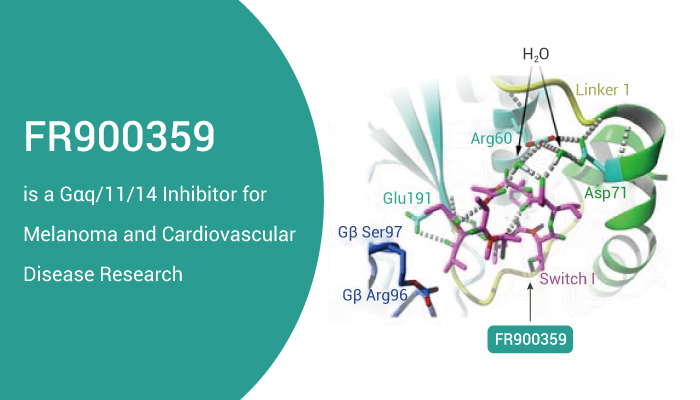The ubiquitous Gαq subunit, a known transducer of plasma membrane G protein-coupled receptors signaling, is a core modulator of mTORC1 and autophagy. The Gαq subunit is made up of four members, which include the Gαq, Gαq/11, Gαq/14, and Gαq15/16. Cells lacking Gαq/11 display higher basal autophagy, enhanced autophagy induction upon different types of nutrient stress along with a decreased mTORC1 activation status. They are also unable to reactivate mTORC1 and thus inactivate ongoing autophagy upon nutrient recovery. Conversely, stimulation of Gαq/11 promotes sustained mTORC1 pathway activation and reversion of autophagy promoted by serum or amino acids removal. Gαq is present in autophagic compartments and lysosomes and is part of the mTORC1 multi-molecular complex, contributing to its assembly and activation via its nutrient status-sensitive interaction with p62, which displays features of a Gαq effector. Gαq emerges as a central regulator of the autophagy machinery required to maintain cellular homeostasis upon nutrient fluctuations. Gαq/11 is central for the assembly of active mTORC1 multimolecular complexes and consequently for its inhibitory effect on autophagy.

FR900359 is a potent and selective inhibitor of the Gq subfamily of G protein
FR900359 selective inhibits Gαq/11/14 and ERK pathway in mammalian. Therefore, FR900359 suppresses the proliferation of melanoma cells and decreases of blood pressure. FR900359 is a pharmacological tool to block Gq proteins in vitro and in vivo. Chemical stability of FR900359 is high across a large range of pH values. Oral bioavailability and brain penetration of FR900359 is low. FR900359 shows low plasma protein binding and is metabolized significantly fast by human and mouse liver microsomes. FR900359 accumulated in lung after chronic intratracheal or intraperitoneal application, while YM was more distributed to other organs. Most strikingly, the previously observed longer residence time of FR900359 resulted in a significantly prolonged pharmacologic effect as compared to YM in a methacholine-induced bronchoconstriction mouse model. FR900359 also protected against airway hyperreactivity in murine models of allergen sensitization in Ovalbumins (HY-W250978)-induced sensitization model of asthma. FR900359 can be used for cancer and cardiovascular disease research.
All in all, FR900359 is a potent and selective inhibitor of the Gq subfamily of G proteins that has potential for cancer and cardiovascular disease research.
References:
[1] Cabezudo S, et, al. Nat Commun. 2021 Jul 27;12(1):4540.
[2] Tizzano M, et, al. BMC Neurosci. 2008 Nov 13;9:110.
[3] Schlegel JG, et, al. ACS Pharmacol Transl Sci. 2021 Feb 19;4(2):888-897.